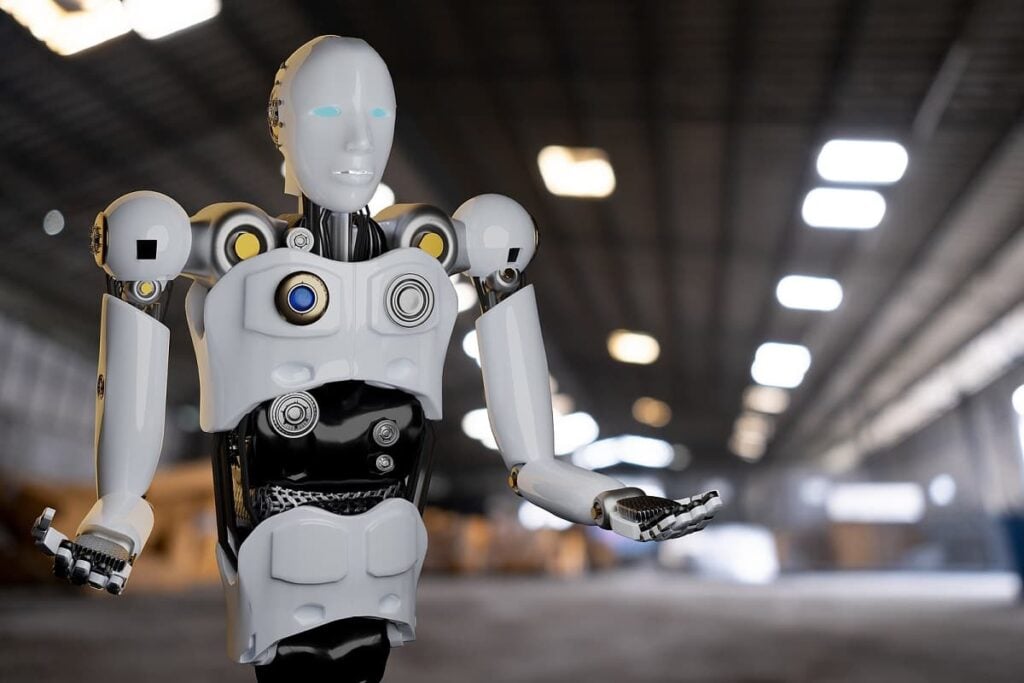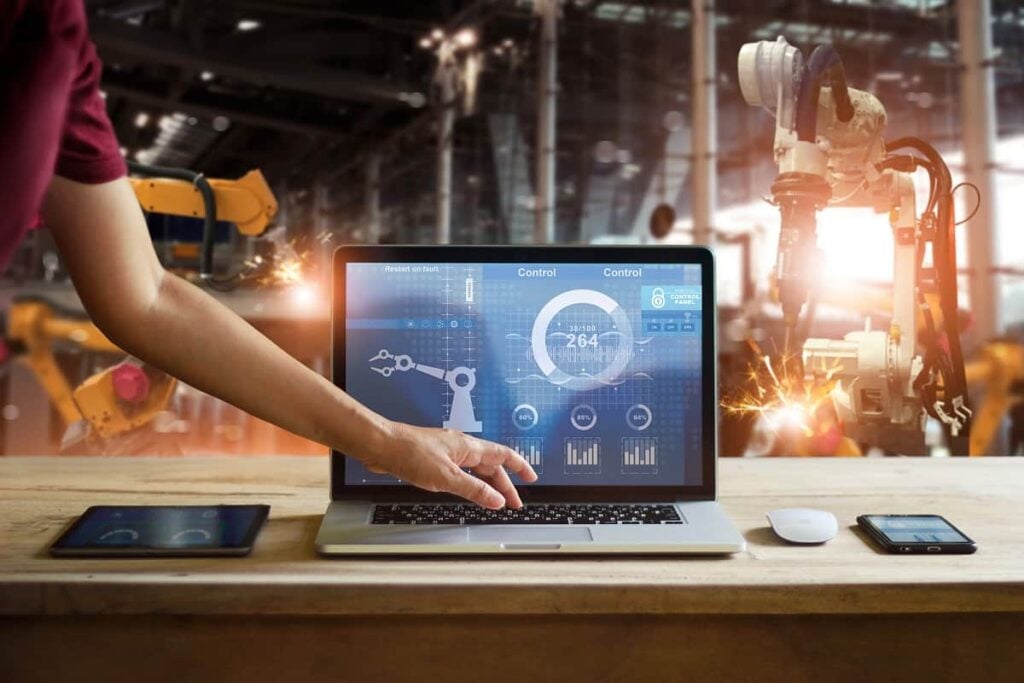inVia Robotics – Plug-and-Play Warehouse Robotics
Table of contents
Table of contents

We’re not quite sure where the nerd gene comes from but all of us here at Nanalyze have it. When the topic comes up of industrial robots that can be trained to do stuff like run around warehouses picking up packages and delivering them, we immediately start to get all warm and fuzzy inside. Here’s a test to see if you have the nerd gene too. Take a look at this picture of a warehouse robotics platform in action:
Now when you look at that picture, if you see a giant kids’ toy for adults, you have the nerd gene. Seriously, how much fun would it be to setup one of these systems and watch it operating at full speed with all the humans “moving on to do more value-added activities“? The company that makes the robots you see in the above picture is called inVia Robotics, and what they’re getting up to is cool AF.
About inVia Robotics
Founded in 2015, inVia Robotics has taken in an undisclosed amount of funding to develop a “simple, intuitive, and affordable robotic picking automation solution” that will save you tons of labor costs free up your warehouse pickers to do more value-added activities. According to Glassdoor, the average warehouse picker pulls down a salary of $24,390 a year. That’s not a great deal of money but it adds up. The idea that inVia has is to supplement your human picking team with robots that help minimize the need for walking.
The robots that inVia has built are the “inVia Picker” and the “inVia Runner”. As the English philosopher Karl Pilkington would say, with names like this you know what you’re going to get. The Runner seen below is meant to carry goods from one location to another, to be loaded/unloaded by a human or a robot:
The other robot called the “Picker” uses a suction cup enabled device to grab items and place them where you like, such as in the Runner robot we just talked about. Seen below, the Picker is capable of picking up items as small as a pack of gum or as large as a case of soda:
Here’s where the nerd in us starts to get really excited. Essentially, you can start configuring your shop floor to implement one or many robots, depending on how many humans you want to fire free up to do more value-added activities. Various configurations include:
- Goods to Person – Retrieve products from totes, bins, or boxes and then deliver them to the humans manning the packing stations with a 99.99% accuracy – 5-20X more efficient
- Goods to Box – Retrieve products from shelf to pack stations or directly to shipping – 100% Accuracy / 100% labor reduction
- Person to Goods Robots – Robots go collect goods from the pickers and do all the walking for them – 3-5X productivity increase
- Person to Goods Software – Optimizes and schedules routes for human pickers – 3-5X productivity increase
Speaking of the software behind these robots, the inVia Robotics Management Software uses artificial intelligence to enable “large numbers of humans and robots to efficiently work together” by creating all those optimized travel paths we talked about earlier. The inVia software integrates with your existing warehouse management system so that the picking instructions can either be passed to a robot, or a human via tablet or smartphone:
The most unique selling point for this solution is the plug-and-play aspect. The goods-to-person solution we discussed earlier can be deployed and fulfilling orders in 1 week. The Company says that “traditional goods to person solutions try to address this, but require an entire warehouse retrofit or even a new warehouse along with tens of millions of dollars in capital“. You can either purchase the system or lease it using a “Robots as a Service” pricing model.
inVia provides a case study on their website in which a printing supplies company called LD Products makes the following statement about how they operated before warehouse robotics came into their lives:
Like most warehouses, as orders came in, they printed them out and gave paper pick tickets to operators who would take the ticket and walk to the aisle, find the bin, select the item, scan it, and put it in a tote. The process was manual, slow, and prone to human error.
Seriously? That’s straight out of the stone ages, but you can bet that’s how most small warehouses operate these days. In the case study, they talked about how great it was to have robots, how everybody was happier, how much money they saved etc., but what stood out to us was the following statement:
Another reason LD Products is glad they implemented inVia Robotics, is that it’s allowed them to open the door for 24-hour operation, because the robots can operate autonomously.
No isht they’re glad because they essentially doubled or even tripled their capabilities by operating 24-hours a day continuously. Let’s not forget holidays and weekends where you usually have to pay your humans overtime to work.
Conclusion
According to the Bureau of Labor Statistics, there are 206,990 warehouse laborers that move stock by hand in the United States. Let’s say you’re a warehouse operator who employs 1,000 of these laborers. Decreasing the number of laborers by just 50% will result in $12 million a year in salary savings in perpetuity. Not only will you save lots of dollars, but you also won’t catch the inVia robots calling in sick, taking smoke breaks, getting injured on the job, cramming merchandise in the boots of their cars, or showing up to work hung over. These robots are available now, and are presently being operated in warehouses throughout the U.S.
Sign up to our newsletter to get more of our great research delivered straight to your inbox!
Nanalyze Weekly includes useful insights written by our team of underpaid MBAs, research on new disruptive technology stocks flying under the radar, and summaries of our recent research. Always 100% free.



















